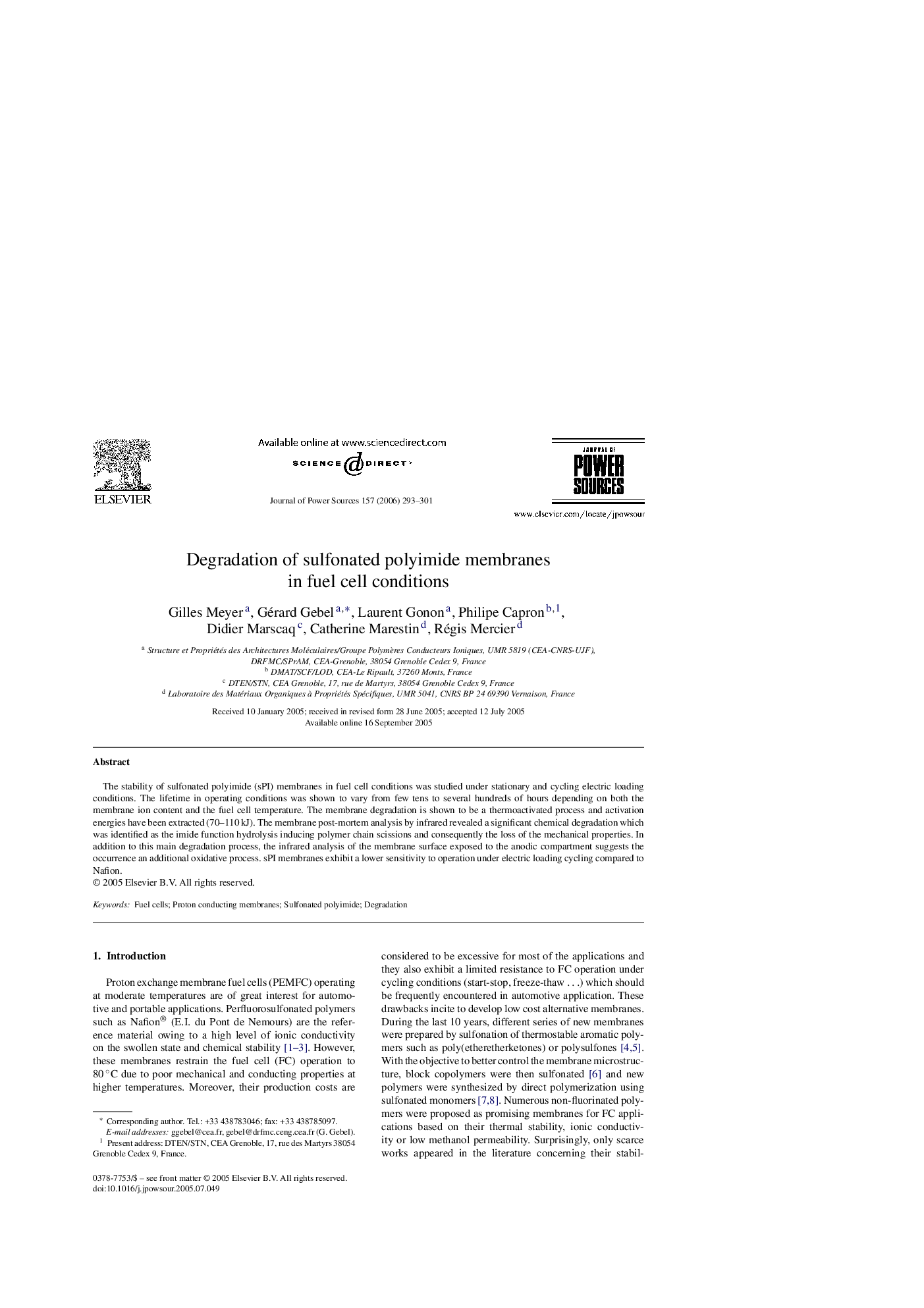| Article ID | Journal | Published Year | Pages | File Type |
|---|---|---|---|---|
| 1292674 | Journal of Power Sources | 2006 | 9 Pages |
The stability of sulfonated polyimide (sPI) membranes in fuel cell conditions was studied under stationary and cycling electric loading conditions. The lifetime in operating conditions was shown to vary from few tens to several hundreds of hours depending on both the membrane ion content and the fuel cell temperature. The membrane degradation is shown to be a thermoactivated process and activation energies have been extracted (70–110 kJ). The membrane post-mortem analysis by infrared revealed a significant chemical degradation which was identified as the imide function hydrolysis inducing polymer chain scissions and consequently the loss of the mechanical properties. In addition to this main degradation process, the infrared analysis of the membrane surface exposed to the anodic compartment suggests the occurrence an additional oxidative process. sPI membranes exhibit a lower sensitivity to operation under electric loading cycling compared to Nafion.
